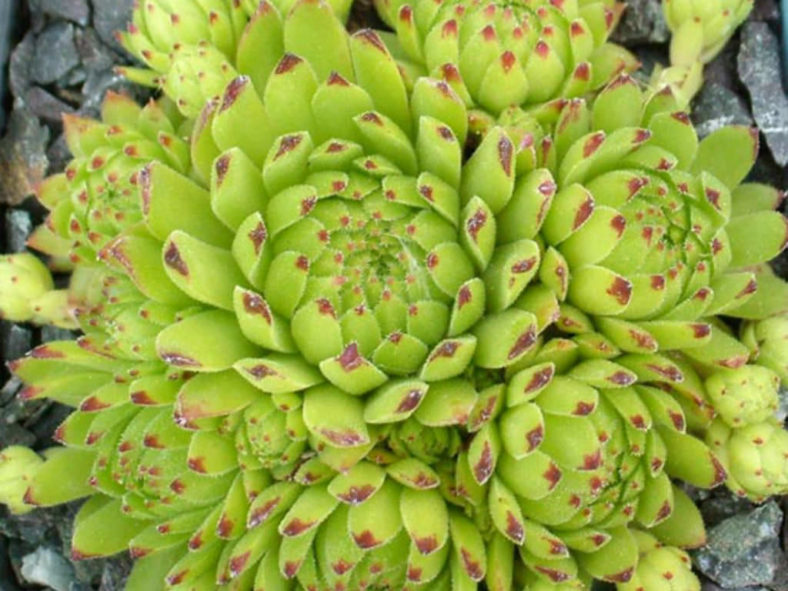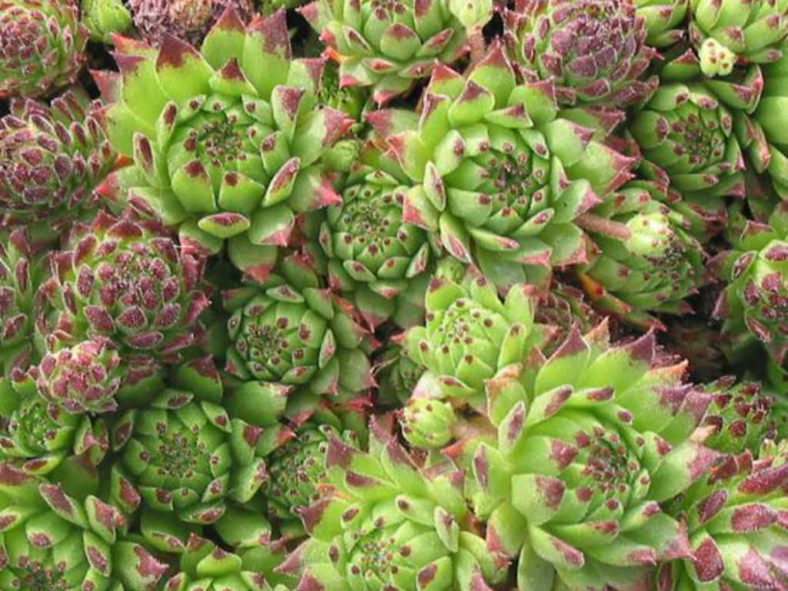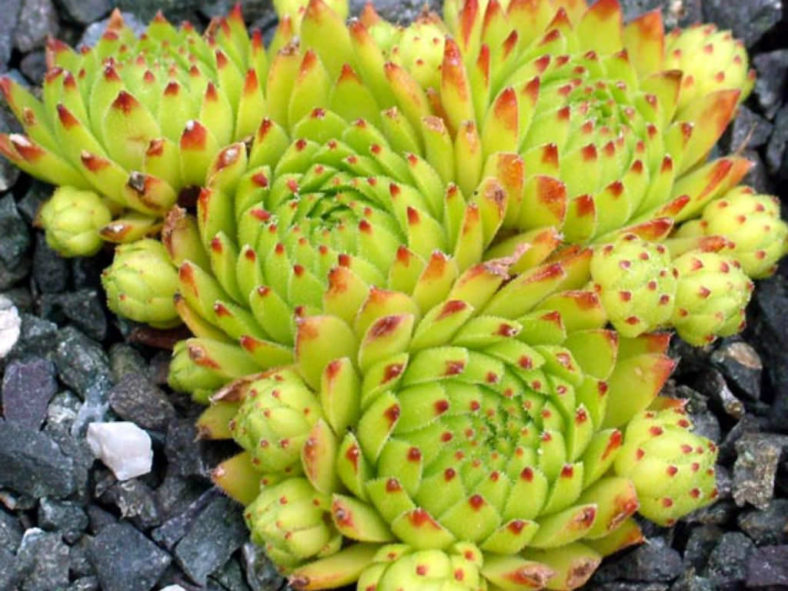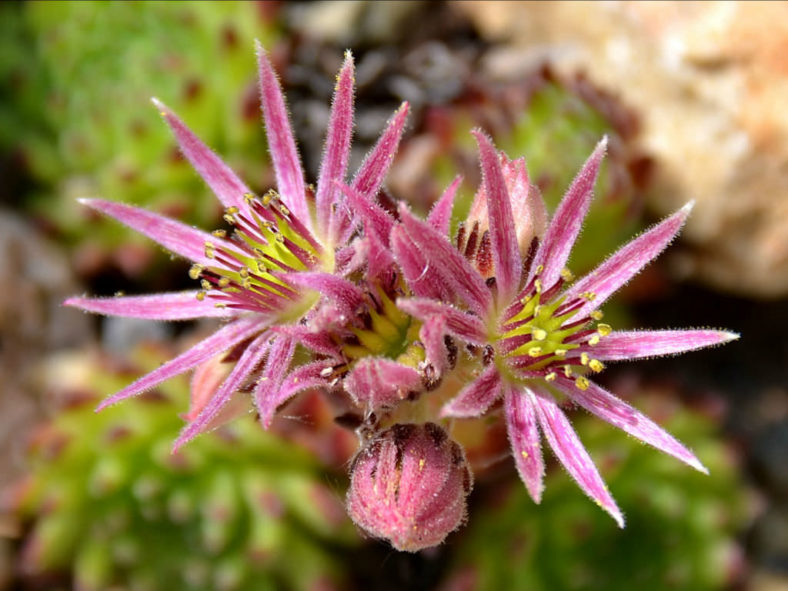Scientific Name
Sempervivum montanum subsp. stiriacum (Wettst. ex Hayek) Wettst. ex Hayek
Common Name(s)
Styrian Houseleek
Synonym(s)
Sempervivum montanum var. stiriacum, Sempervivum stiriacum
Scientific Classification
Family: Crassulaceae
Subfamily: Sedoideae
Tribe: Sedeae
Subtribe: Sedinae
Genus: Sempervivum
Etymology
The subspecific epithet "stiriacum" (pronounced "stir-ee-AH-kum") means "of or from Styria" and refers to Styria, a state in southeastern Austria where this variety is native.
Origin
Sempervivum montanum subsp. stiriacum is native to Austria. It is endemic to the alpine regions of Styria.
Description
Sempervivum montanum subsp. stiriacum is a small succulent that forms tight rosettes of fleshy, hairy, dull-green leaves with a pointed dark red to maroon-brown tip. It distinguishes from Sempervivum montanum subsp. montanum by its slightly narrower leaves. The rosettes can reach a diameter of 2 inches (5 cm) and produce offsets on short stolons, forming dense mats.
In summer, the mature rosettes bear clusters of starry purple-pink flowers on erect, scaly-leaved stalks. The flowers have conspicuous white highlights. The rosettes die after flowering.

How to Grow and Care for Sempervivum montanum subsp. stiriacum
Hardiness: USDA hardiness zones 4a to 9b: from -30°F (-34.4°C) to 30°F (-1.1°C).
Sempervivums are not difficult to grow, provided they are not waterlogged and killed by excess watering. They can be easily grown outdoors and in containers, and they earned the name "Houseleeks" because they tend to root on the roofs of houses. After the mother plant flowers, it will naturally die, but it has likely produced many offsets that will have continued to grow by this time. These are excellent for cold windows. Sempervivum earned its popular name, "Hen and Chicks," from their growth habit. The mother plant, or hen, sends off numerous offsets, clustering around her base like chicks. These offsets can be easily repotted, or the plants can be left to form a clumping mat.
Repot as needed, preferably during the warm season. To repot a succulent, ensure the soil is dry before repotting, then gently remove the pot. Knock away the old soil from the roots, removing any rotted or dead roots. Treat any cuts with a fungicide. Place the plant in its new pot and backfill it with potting soil, spreading the roots out as you repot. Leave the plant dry for a week or so, then water lightly to reduce the risk of root rot.
Learn more at How to Grow and Care for Sempervivum.
Links
- Back to genus Sempervivum
- Succupedia: Browse succulents by Scientific Name, Common Name, Genus, Family, USDA Hardiness Zone, Origin, or cacti by Genus
Photo Gallery
Click on a photo to see a larger version.


